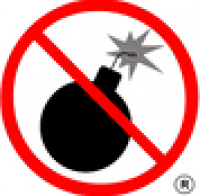
Saturday, May 30, 2020
Business Analysis Jobs - Data Analyst
Business Analysis Jobs - Data Analyst: The Caliburn Analytics team is currently seeking a high-energy data scientist. The ideal candidate will analyze data and extract insights and patterns from various sources to help build dashboards, forecast future events, automate processes, and increase performance for the company and for our clients.


Thursday, May 28, 2020
Member Service Officer 1 or 2
Member Service Officer 1 or 2: Seeking Member Service Officers 1 or 2 with relevant customer service and/or cash handling experience in a retail or banking environment for Lompoc, CA 93436


Wednesday, May 27, 2020
K9 Veterinarian & Veterinarian Technician
K9 Veterinarian & Veterinarian Technician: Working dogs are an essential part of our government and military client teams. Highly trained in explosive detection, these dogs sniff out danger and are vital to the safety and well-being of civilians and troops stationed abroad. Caliburn’s veterinary staff provides holistic services at three Middle Eastern locations for these canine heroes, including physical exams, routine and emergency care, and surgery.


Onsite Temperature Screener USA locations
Onsite Temperature Screener USA locations: The Onsite Temperature Screener is responsible for the oversight and operational performance of an Onsite Temperature Screening Event at a customer’s work site.


Emergency Medical Technician Onsite Temperature Screeners International locations
Emergency Medical Technician Onsite Temperature Screeners International locations: .Emergency Medical Technician Onsite Temperature Screeners (Temporary) for Saudi Arabia, Qatar, UAE, Australia, Germany, Canada. Jobs for Local Nationals from that City and Country.


Tuesday, May 19, 2020
Explosive Detection K-9 Handler
Explosive Detection K-9 Handler: Seeking Explosive Detection K-9 Handlers, Full Time for CA, DC, GA, KY, MD, NY, TN, TX, UT, VA, WV


Wednesday, May 13, 2020
Resume Building and What should I include in my federal resume?
Resume Building Often Veterans will need some guidance on applying on USAJOBS.GOV, building the personal profile, building a federal resume, and extra tips when applying. Very soon Paul Moore will be putting out a very comprehensive presentation for this and as I tell everyone, he is by far the authority on this and has taught this all over our catchment area to EDD and other vocational stakeholders. Below you will find the details regarding how to set up a USAJOBS.GOV profile, build your resume (building it takes much more time and detail but will get much more positive results, I use this myself). I encourage Veterans to begin with this, take their time so it is not overwhelming. Veterans should first watch some short introductory USAJOBS official videos below, to get the main idea, so that when they begin building the resume and applying they will be more knowledgeable and confident. Sort of like reading the instructions on assembling something before you actually assemble it. First, creating a USAJOBS Account USAjobs.gov: Creating Your Account Profile https://www.youtube.com/watch?v=3uDp74z0tZY Brief USAJOBS Resume Tutorial https://www.youtube.com/watch?v=8YX7o1PBoFk Five minute video below: How to Apply for Federal Jobs https://www.youtube.com/watch?v=Gih8-cwTCQU Next is the step by step process for building a resume in USAJOBS, I also attached this as a document in case it is easier to read, and so you can save it, print it etc. Also attached are tips as to what to include in the federal resume. How to build a resume in USAJOBS, the attached document of this is easier to read and navigate, with active links: Sign into USAJOBS. Go to your Documents. Make sure you’re in the Resumes section and select the Upload or build resume button. Click Build resume. Name your new resume and click Next. Click Add Work Experience, enter the required information and click Save Work Experience. To add additional work experience repeat this step or click Next to continue with your education information. Click Add Education, enter the required information and click Save Education. Repeat this step to add additional education or click Next to continue with your references. You may also click Finish if you don’t want to add more information. Click Add Reference, enter the required information and click Save Reference. You may add up to five references on your resume. Repeat this step to add an additional reference or click Next to continue to the next step. You can enter additional information on your resume such as job related training, language skills, organizations/affiliations, professional publications, and other information. Click the corresponding button under each section to add your information, enter your information and click Add or Save for each section once completed. Click Finish to save your resume. Your new resume will appear in your Documents list. Click View on the resume icon to preview your resume. To edit your resume click Edit on the resume icon and it will bring you to the first page of your resume in the resume builder tool. Save your work periodically For security reasons, your session will time out after a period of inactivity. We recommend you Save periodically so that you do not lose any work. Updating your resume In order to capture changes that you have made to your profile you will need to build a new resume. USAJOBS does not automatically update existing resumes. This allows you to easily keep a set of resumes to apply to different jobs and only apply changes when you desire. Tips for formatting resumes in USAJOBS resume builder You can copy and paste text from Word documents into the resume builder. However, some formatting in these documents may not work in the USAJOBS resume builder. To fix formatting errors inside your resume, you must first save the original file in a .txt format. To copy and paste from Word: Open up your Word document or other word processing tool. Select the File tab at the top. Go to the Save As option. Choose to save it as a Plain Text (.txt) file. Open the new file and ensure the text appears in an acceptable format. Copy and paste your resume text into the resume builder. To edit your USAJOBS resume-builder resume: Click on your username at the top of the page and select Documents from the menu. Find the resume you want to edit and click “Edit” (located below the resume). This will bring you to the first page of your resume. Tips for submitting resumes to agencies Some agencies accept uploaded resumes and resumes created using the USAJOBS resume builder, while some may only accept one or the other. Even though you may have both types of resumes in the Document section of your profile, the agency determines which ones to accept when you are applying online. The Apply button displayed on the job announcement page activates the process for a job seeker to complete an application. USAJOBS automatically provides a list of available resumes and other documents to attach to your application, and will only display resumes and documents the hiring agency is willing to accept. For example, if the hiring agency only accepts resumes created using the USAJOBS resume builder, then your uploaded resumes will not be available to add to your application. Please pay special attention to the How to Apply section of the job announcement to find out which resume format and documents are accepted and how to submit them to the hiring agency. Any questions feel free to contact myself, Paul or David. Barry Davis Coordinator, Community Employment Services Vocational Development Specialist (909) 825-7084 ext. 4933 Pager 7324 VA Loma Linda Health Care System 11201 Benton Street Loma Linda, CA 92357 Excellence is relentless
What should I include in my federal resume? Whether you’re a current federal employee or new to the Federal Government, your resume is the primary way for you to communicate your education, skills and experience. Before you get started Read the entire job announcement. Focus on the following sections to understand whether or not you qualify for the position. This critical information is found under: • Duties and Qualifications • How to Apply (including a preview of the assessment questionnaire) • How You Will be Evaluated Make sure you have the required experience and/or education before you apply. Hiring agencies use the job announcement to describe the job and the required qualifications, including: • Level and amount of experience • Education • Training What to include in your resume Federal jobs often require that you have experience in a particular type of work for a certain period of time. You must show how your skills and experiences meet the qualifications and requirements listed in the job announcement to be considered for the job. Include dates, hours, level of experience and examples for each work experience For each work experience you list, make sure you include: • Start and end dates (including the month and year). • The number of hours you worked per week. • The level and amount of experience–for instance, whether you served as a project manager or a team member helps to illustrate your level of experience. • Examples of relevant experiences and accomplishments that prove you can perform the tasks at the level required for the job as stated in the job announcement. Your experience needs to address every required qualification. Example Program Analyst GS-343-11 January 2009 - Present 40 Hours/Week $63,000/Year • Experience/Accomplishment • Experience/Accomplishment Include volunteer work and roles in community organizations Don’t limit yourself to only including paid work experience. Include relevant volunteer work or community organizations roles that demonstrate your ability to do the job. Use numbers to highlight your accomplishments Use numbers, percentages or dollars to highlight your accomplishments–you can find this information in things like your performance reviews, previous job descriptions, awards and letters of recommendation. When explaining your accomplishments: • Include examples of how you saved money, earned money, or managed money. • Include examples of how you saved or managed time. Examples • “Improved efficiency of document processing by 25% over the previous year”. • “Wrote 25 news releases in a three-week period under daily deadlines”. • “Managed a student organization budget of more than $7,000”. • “Wrote prospect letter that has brought in more than $25,000 in donations to date”. These statements show in concrete terms what you accomplished. More resume writing tips Customize your resume You should tailor your resume to the job announcement rather than sending out the same resume for every job. Customizing your resume helps you match your competencies, knowledge, skills, abilities and experience to the requirements for each job. Emphasize your strengths and include everything you’ve done that relates to the job you’re seeking. Leave out experience that isn’t relevant. Use similar terms and address every required qualification Your experience needs to address every required qualification in the job announcement. Hiring agencies will look for specific terms in your resume to make sure you have the experience they’re seeking. For example, if the qualifications section says you need experience with “MS Project” you need to use the words ” MS Project” in your resume. Organize your resume to make it easy to understand You need to organize your resume to help agencies evaluate your experience. If you don’t provide the information required for the hiring agency to determine your qualifications, you might not be considered for the job. • Use reverse chronological order to list your experience–start with your most recent experience first and work your way back. • Provide greater detail for experience that is relevant to the job for which you are applying. • Show all experiences and accomplishments under the job in which you earned it. This helps agencies determine the amount of experience you have with that particular skill. • Use either bullet or paragraph format to describe your experiences and accomplishments. • Use plain language– avoid using acronyms and terms that are not easily understood. Be concise Hiring agencies often receive dozens or even hundreds of resumes for certain positions. Hiring managers quickly skim through submissions and eliminate candidates who clearly are not qualified. Look at your resume and ask: • Can a hiring manager see my main credentials within 10 to 15 seconds? • Does critical information jump off the page? • Do I effectively sell myself on the top quarter of the first page? Review your resume before you apply Check your resume for spelling and grammatical errors and have someone else, with a good eye for detail, review your resume. Important facts about the federal hiring process • The Federal Government does have a standard job application. Your resume is your application. • Hiring agencies use the job announcement to describe the job and list the required qualifications and responsibilities. • After applying, the hiring agency uses the information in your resume to verify if you have the required qualifications stated in the job announcement. • Once the hiring agency has determined who is qualified, they may use other assessments such as interviews or testing to determine the best qualified applications.
Learn more about the federal hiring process.
Security Clearance 101
WHO NEEDS A SECURITY CLEARANCE?
Any person who has worked or will work for an organization that requires access to restricted information more than likely has or will need a security clearance.
There are over hundreds of thousands military personnel transitioning out of the service each year. These separating military members look for employment in fields such as the commercial defense‐related fields where they can utilize their expert military training and technical skills. In addition, these jobs generally require background checks due to the sensitive nature of the materials the individual handles on a daily basis ‐ this is where the former military member's clearance may become a valuable commodity.
WHAT IS A SECURITY CLEARANCE?
Certain federal employees and certain employees in the private sector are required to have security clearances because their job requires them to have access to classified documents. Various other work takes place in secured facilities. The occupant of any such job is said to hold a "sensitive" position, defined as "any position, by virtue of its nature, could bring about a material adverse effect on national security". At any given time, there are about 3 million
people with security clearances. In addition, there are about 1.5 million security clearances in the hands of private contracting or consulting firms. Contractors participate in what is called the industrial security program administered by the Defense Industrial Security Clearance Office (DISCO) which is part of the Joint Information Systems Technology (JIST), a military agency.
One out of every thirty Americans has some sort of security clearance. It has been estimated that one out of every thousands of these can be expected to compromise the secrets they are entrusted with. Some need money, some can be blackmailed, some are disgruntled and want revenge and some are just sloppy. American industry is a prime target for espionage as well as domestic terrorism and white collar crime.
A security clearance is technically a license issued by the head of a department, division or agency of the federal government. The type of security clearance that one can be approved for also depends upon the department, division, or agency involved. For classification purposes, the types of security clearances are:
• Confidential
• Secret
• Top Secret
-Sensitive Compartmentalized Information (SCI)
-Single Scope Background Investigation (SSBI)
The Confidential security clearance is the easiest to obtain. Whereas other classifications will almost always involve a background check by the Defense Investigative Service (DIS), clearance programs for a confidential classification may be operated by the agencies themselves, like the Federal Bureau of Investigation (FBI), the Department of Energy (DoE), the Department of State, etc.
Secret (sometimes called "Ordinary Secret") and Top Secret classifications almost always have some amount of military involvement in the clearance process. These types of licenses are typically found in agencies like the CIA or NSA. One of the differences between Secret and Top Secret is how "expansive" the background check is, i.e., how far and deep the investigation goes into your dependents, friends and relatives.
SCI classifications are only cleared for a few people and the background investigation process as well as the continual monitoring is extremely intensive.
The amount of time it takes to receive a security clearance is usually between six months to one year, if all goes well. Rarely, if ever, are temporary clearances granted during the review process.
TYPES OF SECURITY CLEARANCES:
The scope of investigative work needed to grant a security clearance depends on the level of clearance being requested. There are three basic levels of security classification:
o CONFIDENTIAL: This refers to material, which, if improperly disclosed, could be reasonably expected to cause some measurable damage to the national security. The vast majority of military personnel are given this very basic level of clearance. This level needs to be reinvestigated every fifteen years.*
o SECRET: The unauthorized disclosure of secret information could be expected to cause serious damage to the national security. This level is reinvestigated every ten years.*
o TOP SECRET: Individuals with this clearance have access to information or material that could be expected to cause exceptionally grave damage to the national security if it was released without authorization. This level needs to be reinvestigated every five years.*
o * Reinvestigations are more important than the original investigation because those individuals who have held clearances longer are more likely to be working with increasingly critical information.
WHO CAN GET A SECURITY CLEARANCE?
Any person who is employed by an organization that is sending, receiving, or developing information that the government has deemed as important to National security will need to obtain a security clearance.
Currently, there are more than 500,000 background investigations pending for security clearance approval. When an individual is going through the process for clearance, it may take up to a year before a determination is made. This makes a military candidate who already has clearance even more appealing to a hiring company. If the company hires a person who will need to gain a clearance, they may wait over a year before the person is eligible to work on the project for which they were hired. This is a lot of lost time and money to a company. If they can identify a person who has the necessary clearances, such as a candidate with a military background, that person immediately becomes more valuable.
HOW DO YOU GET A SECURITY CLEARANCE?
There are three main phases to receiving a security clearance:
There are three main phases to receiving a security clearance:
1. Contact your Program Manager or FSO
a. The first phase is the application process. This involves verification of U.S. citizenship, fingerprinting and completion of the Personnel Security Questionnaire (SF‐86).
b. The second phase involves the actual investigation of your background. Most of the background check is conducted by the Defense Security Service (DSS).
c. The final phase is the adjudication phase. The results from the investigative phase are reviewed. The information that has been gathered is evaluated based on thirteen factors determined by the Department of Defense (DoD). Some examples of areas they consider are; allegiance to the United States, criminal and personal conduct, and substance abuse or mental disorders. Clearance is granted or denied following this evaluation process.
HOW LONG ARE SECURITY CLEARANCES VALID?
A Periodic Reinvestigation (PR) is required every:
o 5 years for a TOP SECRET Clearance
o 10 years for a SECRET Clearance or
o 15 years for a CONFIDENTIAL Clearance.
However, civilian and military personnel of DOD can be randomly reinvestigated before they are due for a PR.
A security clearance is a valuable commodity outside of the military. This is because civilian companies who do classified work for the Dept. of Defense (DoD), or a national security related contract, must bear the cost of security clearances for their employees and clearance investigations can cost several thousands of dollars. Because of this, many DoD contractors give hiring preference to ex‐military personnel with current clearances. However, you want to do your job‐hunting right away, after separation. Once your clearance expires, you cannot simply request that DoD issue a new one or conduct a Periodic Reinvestigation, simply to make your job‐hunting prospects easier. To be issued a clearance, or to renew your clearance by DoD, your present duties/assignment, or pending duties/assignment must require such access.
SECURITY CLEARANCE REQUIREMENTS
An individual cannot apply for Security Clearance. A cleared contractor or government entity must sponsor you. You either (a) must be an employee of or consultant for that cleared contractor, or (b) you've received and accepted a written offer of employment from the cleared contractor. That offer must also indicate your employment will begin within 30‐days of receiving your clearance.
The cleared contractor's Facility Security Officer (FSO) starts the process in two ways. First the FSO sends an investigation request through the Joint Personnel Adjudication System (JPAS). Second, the FSO has the employee complete a clearance application in the Electronic Questionnaires for Investigations Processing (e‐QIP). After review and approval of that information, the FSO submits the completed e‐QIP to the Defense Industrial Security Clearance
Office (DISCO) for review. Once DISCO approves the information, it is sent onto Office of Personnel Management (OPM), which conducts the actual investigation and sends the findings back to DISCO. DISCO then either gives clearance, or forwards the results to Defense Office of Hearings and Appeals (DOHA) for further action.
Military-Civilian Testimonials 5/13/20
Military-Civilian Testimonials 5/13/20
Caliburn Global Medical Services
Hello Lucy!
How are you? Your great ventures, your company is amazing! Your services worldwide is obviously known. More power! Hope you stay safe & healthy always!
Maya Lourdes G.
Navy Warship Spills 4,000 Gallons of Fuel into Virginia River
The guided-missile cruiser USS Philippine Sea (CG 58) transits the Atlantic Ocean. (U.S. Navy photo/Nicholas Hall)
12 May 2020
The Associated Press | By The Associated Press
YORKTOWN, Virginia -- A large warship spilled 4,000 gallons of fuel into a Virginia river late last week, the U.S. Navy has confirmed.
The USS Philippine Sea, a guided-missile cruiser, spilled the diesel fuel into the York River on Thursday morning, WAVY-TV reported Monday.
The ship was at a pier at the Yorktown Naval Weapons Station at the time, according to Ted Brown, a U.S. Fleet Forces Command Environmental public affairs officer.
A Navy oil recovery team and the U.S. Coast Guard responded, and most of the fuel was contained, officials said. Cleanup efforts began immediately using a fuel vacuum truck and fuel-absorbing materials, Brown added. He said there was little impact to the shoreline.
The Navy is investigating the cause of the spill.
Tuesday, May 12, 2020
K9 Veterinarian & Veterinarian Technician
K9 Veterinarian & Veterinarian Technician: Working dogs are an essential part of our government and military client teams. Highly trained in explosive detection, these dogs sniff out danger and are vital to the safety and well-being of civilians and troops stationed abroad. Caliburn’s veterinary staff provides holistic services at three Middle Eastern locations for these canine heroes, including physical exams, routine and emergency care, and surgery.


Wednesday, May 6, 2020
What Veteran Business Owners Should Know about Government Contracting during the Covid-19 Crisis
PAYROLL RELIEF
Section 3610 of the Act provides payroll relief for government contractors, who may be reimbursed for expenses associated with providing paid leave to qualifying employees and subcontractors.
Employees and subcontractors qualify when:
· They are unable to perform work on federal government facilities due to public health emergency restrictions; and
· Their duties cannot be performed remotely by teleworking.
Reimbursement is limited to the minimum billing rates stated in the contract, not exceeding an average of 40 hours per week, including sick leave. Section 3610 of the Act sunsets on 9/20/20.
SPEEDY PROCUREMENTS
The Act also addresses an increased use of Other Transaction Authorities (OTAs), which can help contractors speedily secure procurements. OTAs traditionally give the Department of Defense the ability to move forward with certain prototype and research projects without going through the traditional acquisition process, which can take years. (10 U.S.C. § 2371b).
The Act extends the Department of Health and Human Service’s ability to use OTAs, and it removes some spending caps on their use with other agencies. “Agencies have also sped up the use of other contract vehicles, such as blanket purchase agreements, which allow agencies to purchase supplies or services through an established contractor for repetitive needs,” Jerry McGinn, executive director at George Mason University’ Center for Government Contracting, said in a Washington Business Journal article. “We’ve seen lots of quick churn, 24-hour responses on BPAs and other funding opportunities where the agencies are looking to get things immediately on contract.”
Paid Leave Benefits to Employees during the Covid-19 Crisis
Now the Emergency Family and Medical Leave Expansion Act
(FEMLEA) requires certain
employers to expand upon the Family and Medical Leave Act (FMLA) for some
employees so that they may take paid time off work.
WHO IS INCLUDED
· Private sector employers with fewer than 500
employees
· Government employers with 1 or more employees
· The Department of Labor may exempt small
business with fewer than 50 employees when the viability of the business is
threatened; the Department will issue regulations on this exemption
· Employees who have been employed at the business
for at least 30 calendar days
· Employers may choose to exclude emergency first
responders and health care providers
HOW EMPLOYEES QUALIFY
· If an employee needs to care for a family member
under quarantine/isolation
· If an employee needs to care for a minor child
whose school or childcare is unavailable as a result of the COVID-19 pandemic
· If the employee is diagnosed with coronavirus
· An employee DOES NOT qualify if they are
quarantined because they were exposed to coronavirus but are not sick with the
virus
SPECIFICS FOR
QUALIFYING EMPLOYEES
· Employees will not be paid for the first 10 work
days, unless the employee uses vacation, personal, or sick leave, which is not
required
· After 10 days, the employee is paid 2/3 of
regular pay for the remainder of leave, with a cap of $200/day and $10,000 in
total for the leave period, which can be up to 12 weeks
· The 12-week leave period is reduced if the
employee took an FMLA leave within the same administrative year
· The FMLA’s job protection and anti-retaliation
apply to EFMLEA, except for employers with fewer than 25 employees and when the
employee’s job no longer exits due to the circumstances following the public
health emergency
EMERGENCY PAID SICK LEAVE
ACT
The Emergency Paid
Sick Leave Act requires that employers provide all full-time employees with up
to 80 hours of paid sick leave and pro-rated hours of paid sick leave for
part-time employees.
WHO IS INCLUDED
· Private sector employers with fewer than 500
employees
· Government employers with 1 or more employees
· The Department of Labor may exempt small
businesses with fewer than 50 employees when the viability of the business is
threatened; the Department will issue regulations on this exemption
· NO minimum term of employment
· Employers may choose to exclude emergency first
responders and health care providers
HOW EMPLOYEES QUALIFY
· Employee is subject to mandated quarantine or
isolation
· Employee has been advised by a health care
provider to quarantine
· Employee is experiencing symptoms of coronavirus
and seeks medical attention
· Employee is caring for a minor child whose
school or childcare is unavailable
· Employee is experiencing a similar condition as
identified by the Secretary of Health and Human Services
SPECIFICS FOR
QUALIFYING EMPLOYEES
· Full-time employees are eligible for 80 hours
· Part-time employees are eligible for hours based
upon the amount of time that they regularly work over a two-week period
· For employees seeking pay due to mandated or
health-care-provider suggested quarantine, or for those seeking medical
attention due to COVID-19 symptoms, pay is equal to 100% of their hourly rate,
if that pay is more than minimum wage, and capped at $511/day and $5,110 in
total for the leave period
· For all other reasons, pay is equal to 2/3 of
regular pay, if that pay is more than minimum wage, with a cap of $200/day and
$2,000 in total for the leave period
· Employees must give notice to employers before
using Emergency Paid Sick Leave
· Employers can’t ask that employees use other
paid leave before using Emergency Paid Sick Leave
· Employers must post notice to employees about
their right to use Emergency Paid Sick Leave; the Secretary of Labor will draft
a model notice that employers can use
TAX CREDITS
Employers can seek tax
credits related to Emergency Paid Sick Leave and Emergency Paid Family and
Medical Leave.
Tuesday, May 5, 2020
Logistics Specialist II for West Melbourne FL
Logistics Specialist II for West Melbourne FL: The Logistics Specialist II for West Melbourne Florida 32904 will assist with the shipping of dangerous or hazardous materials in accordance with the International Air Transit Association (IATA), International Traffic in Arms Regulations (ITAR), and Export Administration Regulations (EAR).


Friday, May 1, 2020
Wright-Patterson physicians coordinating a new protocol for COVID-19 patients
By Kristen VanWert, 88th Medical Group / Published April 10, 2020
Air Force doctors Maj. Evan Fisher, Chief of Nephrology, and Maj. Matthew Koroscil, a Pulmonary and Critical Care Specialist at the Wright-Patterson Medical Center, are leading the way in coordination with the Dayton, Ohio medical community on a new drug protocol for COVID-19 patients, April 13, 2020. Their work on the project allowed Premier Health’s Miami Valley Hospital to potentially lead the country in administration of the Mayo Clinic approved plasma protocol. (U.S. Air Force photo by Matthew Clouse
Military-Civilian Testimonial
Military-Civilian Testimonial 4/30/20
Military-Civilian Nursing Candidates
Nursing positions
Hello, my name is Carol. I am reaching out to you today in hopes that you
may be able to provide me with information on available Nursing Positions in
the Vicenza, Italy area. Currently we are stationed at Fort Benning, GA
where I am licensed and have been working as a Registered Nurse over the
last year. My husband has received an assignment notification and we are
scheduled to report to Vicenza Italy on 10 October 2020. Continuing to work
and gain experience in the field of nursing is very important to me. I have
been visiting USA JOBS and federal job websites daily with little luck. Is
there any advice or avenues you would recommend when seeking available
nursing positions on the army base in Vicenza Italy? Thank you for your time
and assistance in this matter, any information you could provide would be
greatly appreciated.
Sincerely,
Carol T
Sent from my iPhone
Subscribe to:
Comments (Atom)









